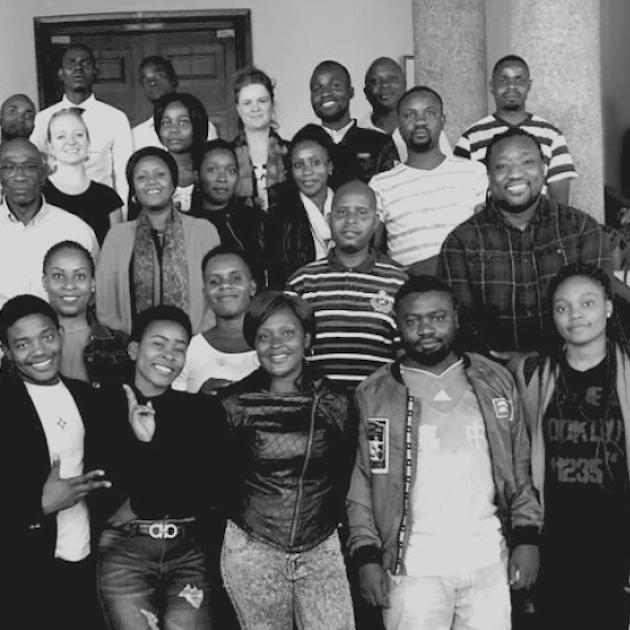Equimundo, along with partners the Malawi College of Medicine, the Centre for Alternatives for Victimized Women and Children (CAVWOC), and Rutgers published a brief on the valuable lessons learned from the Very Young Adolescence 2.0 program; a 12-session curriculum geared toward transforming gender norms and improving sexual and reproductive health outcomes for young adolescents (ages 11-14) in Malawi.
These lessons point to the importance of building trust and rapport with participants, engaging key stakeholders, budgeting realistically, preparing facilitators, and adapting content for cultural and contextual relevance. In addition, the program provides some insight into implementing interventions in the context of COVID-19, paying attention to safe hygiene practices, attitude changes possible in shortened implementation cycles, and building awareness of COVID-19 into outreach.
The brief, written in seven sections, provides a profile of very young adolescents in Malawi, a synopsis of the curriculum, information on start-up activities, methodology for the brief, main findings, and a brief conclusion.
From monitoring data collected during implementation and semi-structured focus group discussions with program facilitators and CAVWOC staff, the lessons learned include:
- Early engagement of and buy-in from stakeholders, including parents/guardians, is critical: After experiencing low or uneven attendance for the first few sessions – poor communication between the project team and the schools, lack of support to mobilize students, absence of participants’ names from facilitators’ lists, and bad weather were all cited as contributing factors – parents were engaged for a refresher on the program, to hear any of their concerns, and to create a plan for future missed attendance. Student attendance increased after this meeting.
- Facilitator excitement, innovation, and adaptability are important for boosting participation and engagement: Facilitators’ ability to adapt to participants’ needs, to create energizers for their groups, to encourage openness and comfort, and to provide make-up sessions for students who missed were all noted as important for youth participation.
- Giving time for trust and comfort to build among facilitators and participants can lead to young people opening up and speaking more: In general, facilitators and those observing the sessions noted that time was required to build trust within the group and that most youth had grown comfortable with one another by Sessions three and four. Facilitators reported using additional energizers and interactive games that were not in the manual to create a more dynamic and relaxed atmosphere. Facilitators also saw that boys and girls, while initially shy, were eager to sit near each other and interact in mixed groups over time.
- After just a few sessions, young adolescents can challenge and change traditional gender norms: Facilitators saw a change in how young male participants defended the importance of equality between men and women and how youth learned to question gendered statements (e.g., “It is a girl’s responsibility to do X”). Facilitators also noticed an increase in girls’ confidence to speak up. Parents said that their sons were involved more in household chores; one facilitator noticed that girls were playing football/soccer. In one school, facilitators observed an increase in the number of gender-based violence cases being brought by youth participants, which facilitators were able to address by helping (in some cases) report these cases to local authorities.
- There is need for a “whole school approach:” Several focus group participants indicated the need for a “whole school approach,” meaning an approach that engages the parents, guardians, and the wider school administration to play a more active role throughout the program, especially at start-up.
- In-country or in-context dynamics can affect the implementation and outcomes of the program: Youth in urban areas reportedly faced more distractions than those in rural ones, leading to lower attendance rates in urban schools.
- Programs must be adequately budgeted for, accounting for specific context-based needs: There was inadequate budgeting for materials needed to implement certain sessions, such as stationery (e.g. pencils and paper), and for incentives to engage other important stakeholders needed to support youth attendance, like teachers and school staff.
- The language of instruction, translation, or way of communicating must be appropriate for participants: Some of the challenges that facilitators experienced were due to the English-to-Chichewa translation of the VYA 2.0 manual. Focus group discussions revealed that some of the words in the English manual were inconsistent with – or did not translate easily into words in – the Chichewa manual. Additional contextualization would be needed in the future to ensure that meaning is retained.
The implementation of VYA 2.0 in Malawi presented valuable insights into adapting and introducing an intervention focused on transforming harmful gender norms and increasing knowledge on sexual and reproductive health and rights among very young adolescents. This approach remains highly relevant as an age-appropriate and effective intervention.
